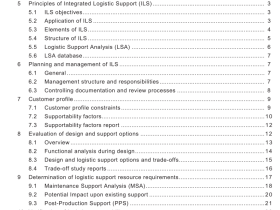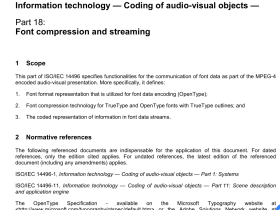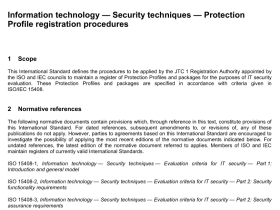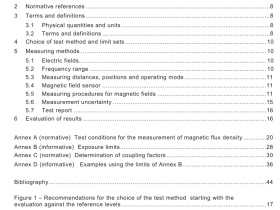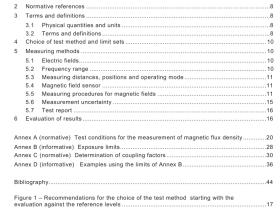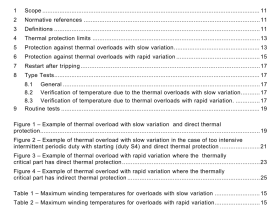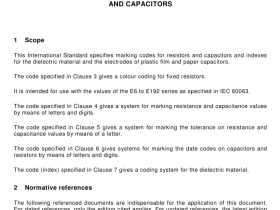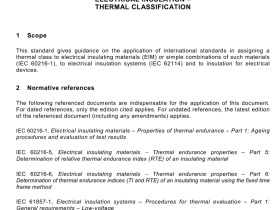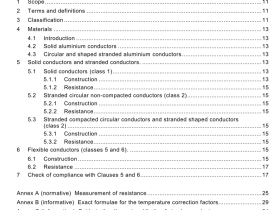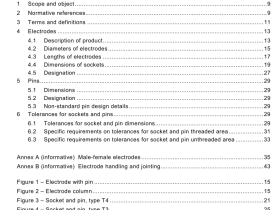IEC 60426 pdf download
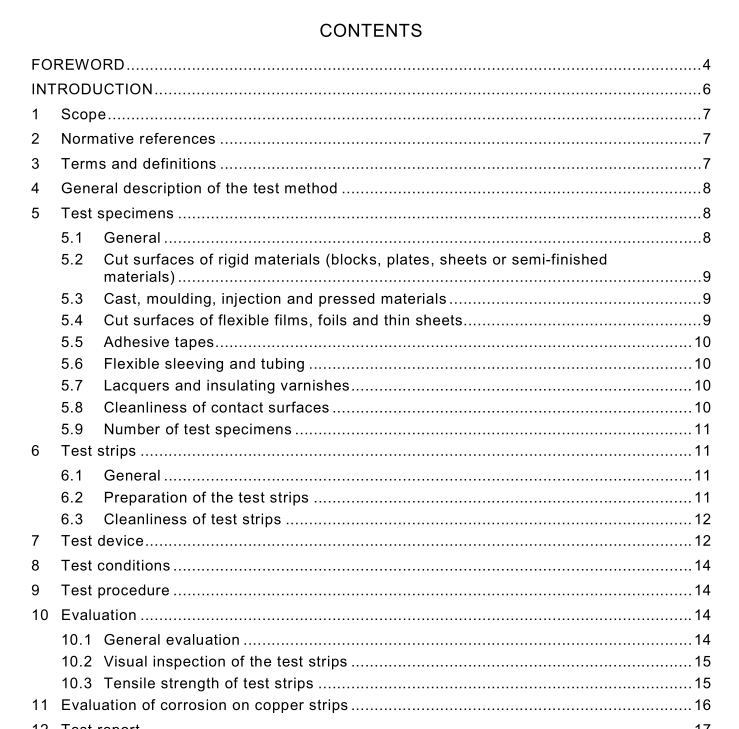
IEC 60426 pdf download Electrical insulating materials – Determination of electrolytic corrosion caused by insulating materials – Test methods
This standard determines the ability of insulating materials to produce electrolytic corrosionon metals being in contact with them under the influence of electric stress, high humidity andelevated temperature.
The effect of electrolytic corrosion is assessed in one test by using consecutively twomethods:
visual semi-quantitative method consisting in comparing visually the corrosion appearingon the anode and cathode metal strips,with those given in the reference figures.
This method consists of the direct visual assessment of the degree of corrosion of twocopper strips, acting as anode and cathode respectively, placed in contact with the testedinsulating material under a d.c. potential difference at specified environmental conditions.The degree of corrosion is assessed by visually comparing the corrosion marks on theanode and cathode metal strips with those shown in the reference figures;
quantitative method, which involves the tensile strength measurement,carried out on thesame anode and cathode metal strips after visual inspection.
An additional quantitative test method for determining electrolytic corrosion,which involvestensile strength measurement of copper wire, is described in the informative Annex C.
2Normative references
The following referenced documents are indispensable for the application of this document.For dated references, only the edition cited applies. For undated references, the latest editionof the referenced document (including any amendments) applies.
IEC 60068-3-4:2001,Environmental testing – Part 3-4: Supporting documentation andguidance – Damp heat tests
IEC 60454-2:—,Pressure-sensitive adhesive tapes for electrical purposes – Part 2: Methodsof test1
3Terms and definitions
For the purposes of this document the following terms and definitions apply.
3.1
electrolytic corrosion
kind of galvanic corrosion caused by joint action of external source of d.c. potential and somesubstances included in some organic materials in presence of high humidity and elevatedtemperature
3.2
test stripa) positive
a metal strip connected with positive pole of direct current source which forms the anodein the contact system: metal – insulating material
b) negative
a metal strip connected with negative pole of direct current source which forms thecathode in the contact system: metal – insulating material
3.3
surface of contacta) of tested material
part of insulating material specimen which is in direct contact with metal stripsb) of metal strip
part of metal strip (positive or negative) which is in direct contact with insulating materialspecimen
4General description of the test method
The test consists of applying specified environmental conditions and a d.c. potentialdifference to two parallel copper strips 3 mm apart,acting as the anode and the cathoderespectively.The insulating material under test (test specimen) is placed across these twostrips. In order to obtain a good and uniform contact between the metal strips and the materialunder test, the test specimen is pressed to the strips by a cylindrical loading tube.
5 Test specimens
5.1General
The preparation of the specimens depends on the type of material and the form in which it issupplied.The shape and dimensions of the test specimen are shown in Figure 1.Proceduresfor the preparation of the test specimen are reported beneath (5.2 to 5.7).
